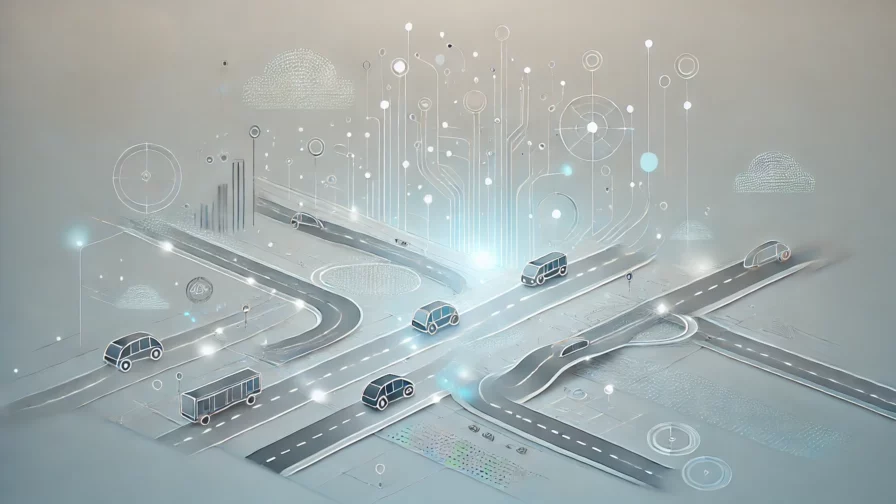
Insights from Hitachi’s Digital Smart Operation platform to explore scalable architectures for intelligent public transport systems.
1. Introduction
The need for efficient and responsive public transportation has never been more critical. As cities expand and populations increase, traditional static transit systems are struggling to keep pace with the dynamic nature of modern urban life. This is where data-driven public transportation systems, exemplified by Hitachi’s Digital Smart Operation platform, are making significant strides in providing smarter mobility solutions.
The concept of smarter mobility represents a paradigm shift in how we approach urban transportation. By leveraging real-time data, advanced analytics, and intelligent systems, cities can now create public transit networks that adapt on the fly to changing conditions, optimize resource allocation, and significantly enhance the passenger experience.
2. Understanding the Core Components of a Data-Driven Mobility System
At the heart of any data-driven mobility system are three key components: smart ticketing, flow management, and operation management. These elements work in concert to create a more efficient, responsive, and user-friendly public transportation network.
Smart ticketing systems go beyond simple fare collection. They provide valuable data on passenger movements, peak usage times, and popular routes. This information is crucial for understanding travel patterns and optimizing service delivery. Moreover, smart ticketing enhances the passenger experience by simplifying fare structures and enabling seamless transfers between different modes of transport.
Flow management is the nervous system of a smart mobility network. It involves real-time monitoring and analysis of passenger movements throughout the system. By understanding these flows, transit authorities can make informed decisions about service frequency, capacity adjustments, and route optimization. This dynamic approach ensures that resources are allocated where they’re needed most, reducing overcrowding and minimizing wait times.
Operation management ties everything together, serving as the brain of the smart mobility system. It processes the vast amounts of data generated by smart ticketing and flow management systems, using advanced analytics and AI to make real-time decisions. From managing vehicle maintenance schedules to responding to unexpected disruptions, operation management ensures that the entire network runs smoothly and efficiently.
3. The Architecture of Digital Smart Operation Platform: A Unified Platform for Smarter Mobility
Hitachi’s Digital Smart Operation platform exemplifies the potential of a unified approach to smart mobility. At its core, Digital Smart Operation creates a real-time digital twin of the entire transportation network. This digital representation is continuously updated with data from many sources, including GPS signals from vehicles, passenger counting systems, weather reports, and traffic updates.
The power of Digital Smart operations in its ability to collect this data and synthesize it into actionable insights. By leveraging artificial intelligence and machine learning algorithms, the platform can identify patterns, predict potential issues, and suggest optimizations that human operators might overlook.
This approach enables proactive management of the transportation network. For instance, the system can predict areas of high demand based on historical data and current conditions, allowing for preemptive adjustment of services. It can also identify potential maintenance issues before they cause disruptions, enabling more efficient scheduling of repairs and reducing downtime.
4. Event-Driven Architecture in Public Transportation
The responsiveness of modern smart mobility systems is largely due to their event-driven architecture. This approach allows the system to react instantly to changes in the network, from minor delays to major disruptions.
In an event-driven system, every occurrence – be it a bus running late, a sudden increase in passengers at a particular station, or a change in weather conditions – triggers a series of automated responses. These responses can range from updating passenger information displays to rerouting vehicles or adjusting service frequencies.
The real power of event-driven architecture lies in its scalability and flexibility. As the number of sensors and data points in the network increases, the system can easily adapt to process this additional information. Moreover, new types of events and responses can be added to the system without major overhauls, allowing for continuous improvement and adaptation to changing urban needs.
5. Challenges and Opportunities in Intelligent Public Transportation Systems (IPTS)
While the potential of Intelligent Public Transportation Systems is immense, their implementation is not without challenges. One of the primary hurdles is the integration of new technologies with existing infrastructure. Many cities have transportation systems that span decades of technological evolution, and bringing these disparate systems into a unified, intelligent network requires significant effort and investment.
Interoperability is another key challenge. As cities adopt smart mobility solutions, ensuring that different systems and components can communicate effectively is crucial. This has led to efforts to develop standardized protocols and interfaces for smart transportation systems.
However, these challenges also present opportunities for innovation. The push for better integration is driving advancements in areas such as edge computing and IoT technologies. Similarly, the need for interoperability is fostering collaboration between different stakeholders in the transportation sector, leading to more comprehensive and versatile solutions.
Looking ahead, the future of IPTS holds exciting possibilities. Advancements in AI and machine learning promise even more sophisticated predictive capabilities. The increasing prevalence of autonomous vehicles could revolutionize public transit, potentially allowing for more flexible, on-demand services. As smart city initiatives gain traction, the integration of transportation data with other urban systems could lead to even more efficient and sustainable urban environments.
6. Conclusion
The evolution of public transportation through data-driven systems represents a significant leap forward in urban mobility. Platforms like Hitachi’s Digital Smart Operation are at the forefront of this transformation, demonstrating the power of integrated, intelligent transportation management.
As cities continue to grow and evolve, the importance of efficient, responsive public transportation cannot be overstated. Smart mobility solutions offer the potential to not only improve the daily commute for millions of people but also to contribute to broader urban goals of sustainability, accessibility, and livability.
The journey towards fully intelligent public transportation systems is ongoing, with challenges to overcome and opportunities to seize. However, the path forward is clear: data-driven, responsive, and integrated systems are the future of urban mobility. As these technologies continue to advance and mature, they promise to reshape our cities and redefine the very concept of public transportation.





